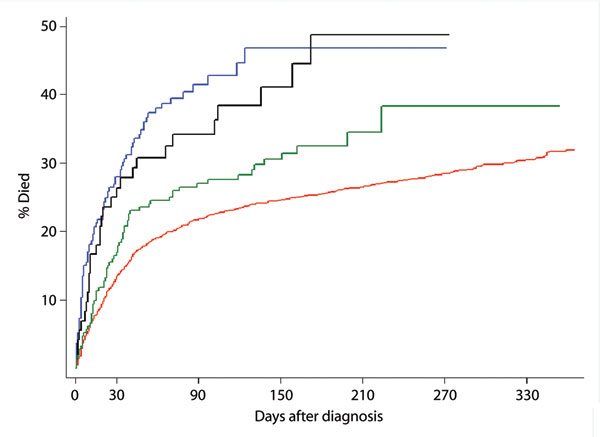Volume 17, Number 6—June 2011
Research
Binary Toxin and Death after Clostridium difficile Infection
Figure 2

Figure 2. Kaplan Meier curves showing the probability of patient survival after diagnosis of Clostridium difficile infection according to the 4 different infection groups (log-rank test, p<0.001). Blue line, C. difficile PCR ribotype 027; black line, C. difficile PCR ribotype non-027; green line, C. difficile with toxins A and B without binary toxin; red line, C. difficile unselected strains not referred for typing.
Page created: August 03, 2011
Page updated: August 03, 2011
Page reviewed: August 03, 2011
The conclusions, findings, and opinions expressed by authors contributing to this journal do not necessarily reflect the official position of the U.S. Department of Health and Human Services, the Public Health Service, the Centers for Disease Control and Prevention, or the authors' affiliated institutions. Use of trade names is for identification only and does not imply endorsement by any of the groups named above.